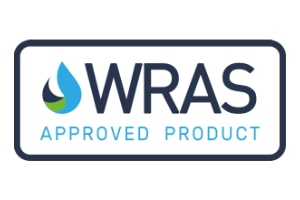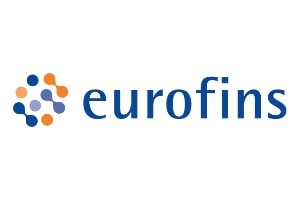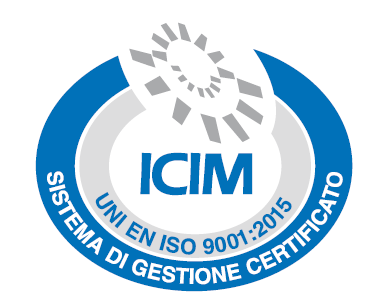Menu
The water consumption taking a shower depends on various parameters: its duration, the flow rate of the tap, of the pipe, and of the showerhead. Let’s consider a 4-minute shower, divided into 4 phases.
It’s clear that the user is forced to reopen the tap several times. This “inconvenience” further shortens the time.
In general, a traditional tap has a flow rate from 12 to over 20 liters per minute when fully open. The typical traditional shower was calculated with a flow rate of 15 l/min. IDRAL tap uses a flow limiter, and the flow rate drops to about 8 liters per minute.
The percentage:
Water consumption differs both by delivery time, i.e., the time in which the water flows, and by flow rate, i.e., the volume that comes out during this time.
Time savings is calculated: 1- (135sec/240sec) = 100% – 56.25%
The volume/flow rate saved is calculated: 1- (8l/min./15l/min.) = 100% – 53.33%
The total water quantity saved is: 1- (53.33%*56.25%) = 100% – 30% = 70%
In other words: Approx. 70% of the water needed for a shower with a traditional mixer will be saved with a timed IDRAL mixer! In our example, instead of using 60 liters, we would have used only 18 liters of water.
Let’s continue with our calculation of savings, translating this difference in consumption into money.
The cost of one cubic meter of water depends on usage. In Italy, up to 100 cubic meters, water has one price, and beyond that, another one. Furthermore, rates vary based on the type of user (residential residents, non-residential residents, commercial, etc.) and also based on the area.
Water is a resource with a cost that varies considerably depending on where you live. Milan is one of the least expensive cities in Italy, while Tuscan municipalities (including Arezzo, Grosseto, Siena, and Livorno) top the list of the most expensive cities with consumption of up to 200 cubic meters.
The highest bill (for consumption of 200 cubic meters) is in central Italy, where water costs an average of 2.12 euros per cubic meter (424.44 euros per year in 2012), followed by the northeast (1.69 euros per cubic meter), northwest (1.28), and south-islands (1.59). The Italian average is 1.62 euros per cubic meter.
Five different components contribute to the total bill: the fixed fee (on average it represents 7%); the water supply service (53%); the sewage service (13%); the purification service (27%); VAT. (www.ilsole24ore.com)
Taking up our example of 60 liters for a traditional shower:
60 liters/1000 liters * 1.62€/mc (Italian average of 2012) = 9.72 cents €
How much does a cubic meter of gas cost and how many cubic meters of methane are needed to heat 42 liters of the total 60 liters (to raise it from 15°C to 50°C)?
Heating Value: 13,284 kcal/kg or 9,530 kcal/Nm³ equivalent to 39.9 MJ/Nm³. These values are indicative only and can vary depending on the distributor, depending on the chemical composition of the natural gas distributed to customers, which can also vary over the course of the year, even with the same distributor. One cubic meter of methane thus produces 9,530 kcal (kilocalories = a unit of thermal energy measurement). The combustion of one cubic meter of commercial natural gas generally produces around 38 MJ, which is equivalent to 10.6 kWh.
The efficiency of the system that heats the water can be less than 50% (when it is a centralized boiler, with a large tank and poor insulation), but it can also be as high as 90% when using an instantaneous boiler. Let’s consider an efficiency value of 0.8 (i.e., 80%).
One cubic meter of methane provides 7,624 kcal to the water (9,530 x 0.8 = 7,624). To increase the temperature by one degree of one liter of water, you need 1 kcal, which is 35 kcal for 35 degrees (from 15°C to 50°C).
To raise the temperature from 15°C to 50°C for the 42 liters of hot water (traditional mixer / 12.6 liters x the IDRAL tap), you would need 35 x 42 (12.6) = 1,470 kcal (or 441 kcal for the IDRAL tap).
To obtain 1,470 kcal, you would need approximately 0.193 cubic meters of methane (as 1,470 divided by 7,624 = 0.193).
To obtain 441 kcal, you would need approximately 0.058 cubic meters of methane (as 441 divided by 7,624 = 0.058).
The average cost of methane from early 2014 to 2015 was 0.828 euros per cubic meter (www.autorita.energia.it Methane Prices), so in that period, heating 0.193 cubic meters of methane would have cost about 0.16 euros (0.193 x 0.828 = 0.16).
The cost of methane for heating hot water with the Idral tap would have been 0.048 euros.
Economic supply conditions for a family with independent heating and an annual consumption of 1,400 m³ at current prices.
The cost of water consumed for a shower at 38°C with a traditional tap would have been 9.72 euro cents for water and an additional 16 euro cents for gas energy (Total 25.72 euro cents).
The same shower with an Idral type 08142 tap would have cost 2.916 euro cents for water and 4.8 euro cents for energy (Total 7.71 euro cents). The money saved would have been 18 euro cents per user.
In a gym with 10 showers, where each shower is used by at least 5 users for 6 days a week for 45 weeks a year: 1056450.18€ = 2592 Euros per year in savings.




Keep up to date
Idral S.p.a. a socio unico – Via Isei 8/10 – 28010 Gargallo (NO) Italia
Cap. Soc. € 660.000 i.v. | C.F. e Iscr. reg. imp. NO 00124610031 | REA n° 104665 | C.C.I.A.A. Novara | P.IVA 00124610031